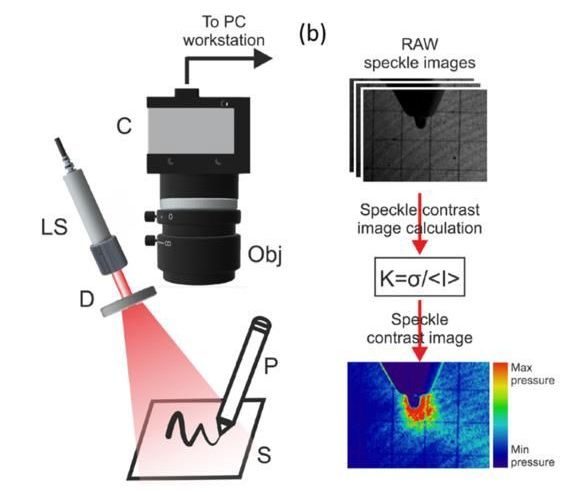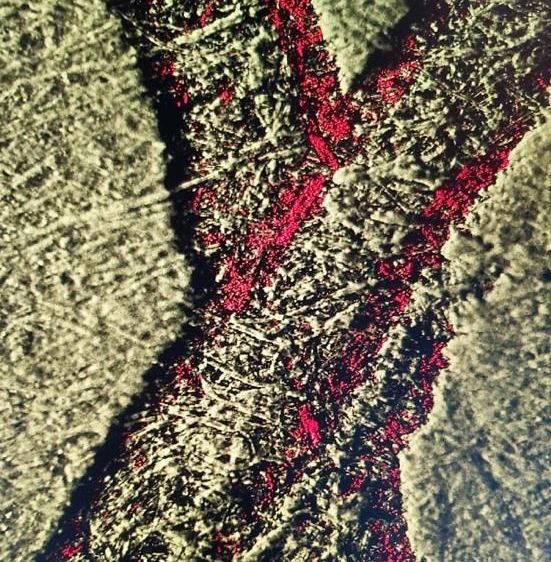The researchers used a dynamic light scattering method. Passing through dense opaque matter (bio-tissues or paper), laser radiation scatters on their internal structural elements and decays into many subtle composite light rays. The scattered parts interfere, resulting in the formation of zones of positive and negative interference, called laser speckles.
If there is any movement in the medium, a tremor in the interference speckle pattern is observed. Analysing speckle tremors allows for a quantitative assessment of the structural properties of a light-scattering medium.
"The method of laser speckle analysis is very sensitive to any mechanical influence, even if these changes occur at the micro- and nano-level. All changes in structural and physical properties are recorded by a high-speed digital camera; then a special computer algorithm calculates and restores accurate information about the nature of both the hand and pencil movement in three dimensions over time. We suggest that this method can be used by forensics for system analysis and the study of handwriting properties of criminals, their victims and witnesses", Igor Meglinskiy, the author of the study, Professor at MEPhI and the University of Aston, told Sputnik.
According to him, the research team's main task is to introduce the study results into practical medicine and forensics. Currently, with the help of the group of Professor Vyacheslav Kalchenko and Dr Yuri Kuznetsov, a certified expert in the field of forensic psychiatry and handwriting (both from Weizmann Institute, Israel), materials are being collected and evaluated to modify the method for it to be used in forensics. It's expected that the method can also be used to establish the effects of psychotropics on people, if necessary.

In addition to the National Research Nuclear University MEPhI, the study involved Aston University (Birmingham, UK), the University of Oulu (Oulu, Finland), and the Weizmann Institute (Rehovot, Israel).





Reader Comments
to our Newsletter